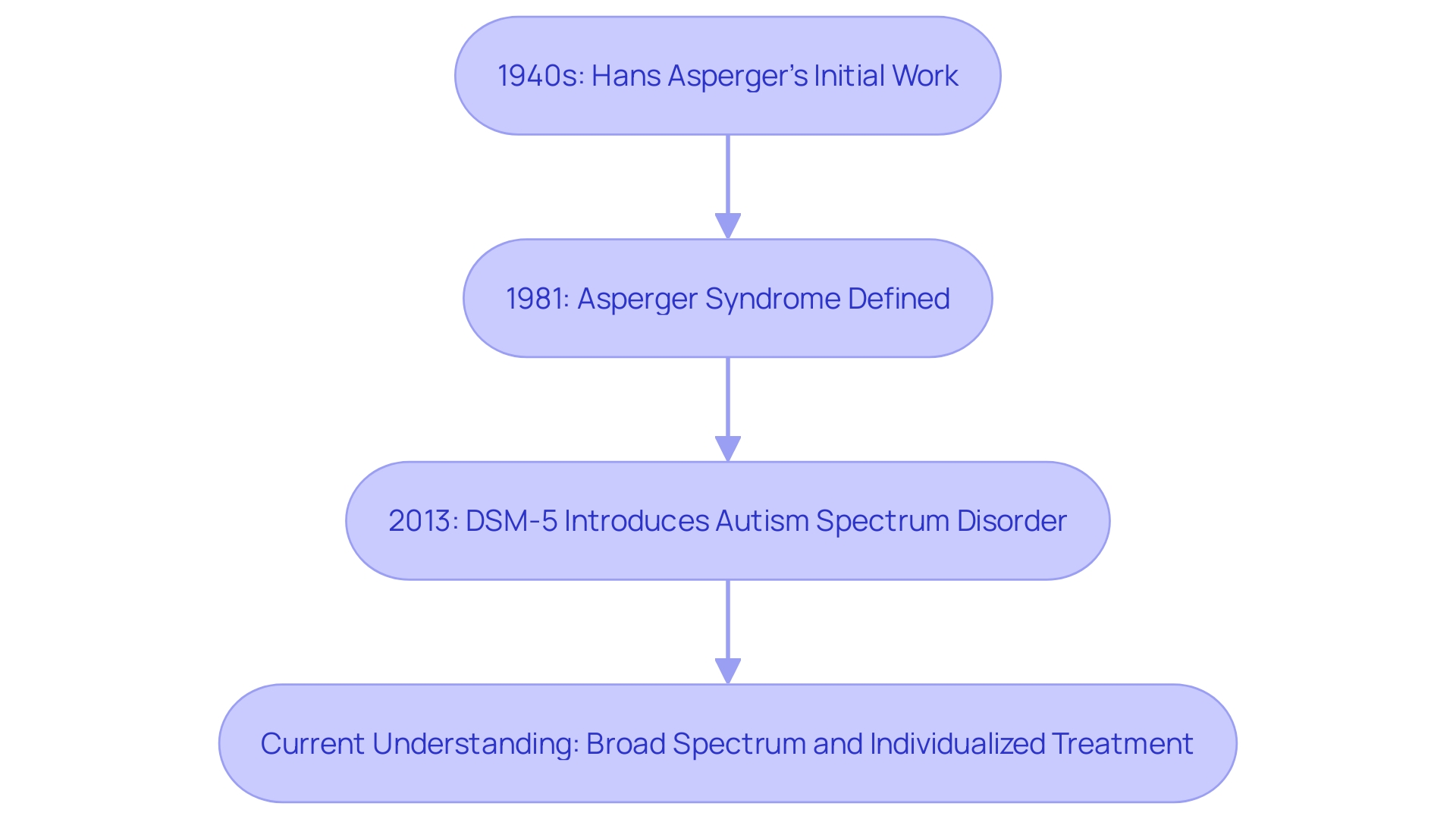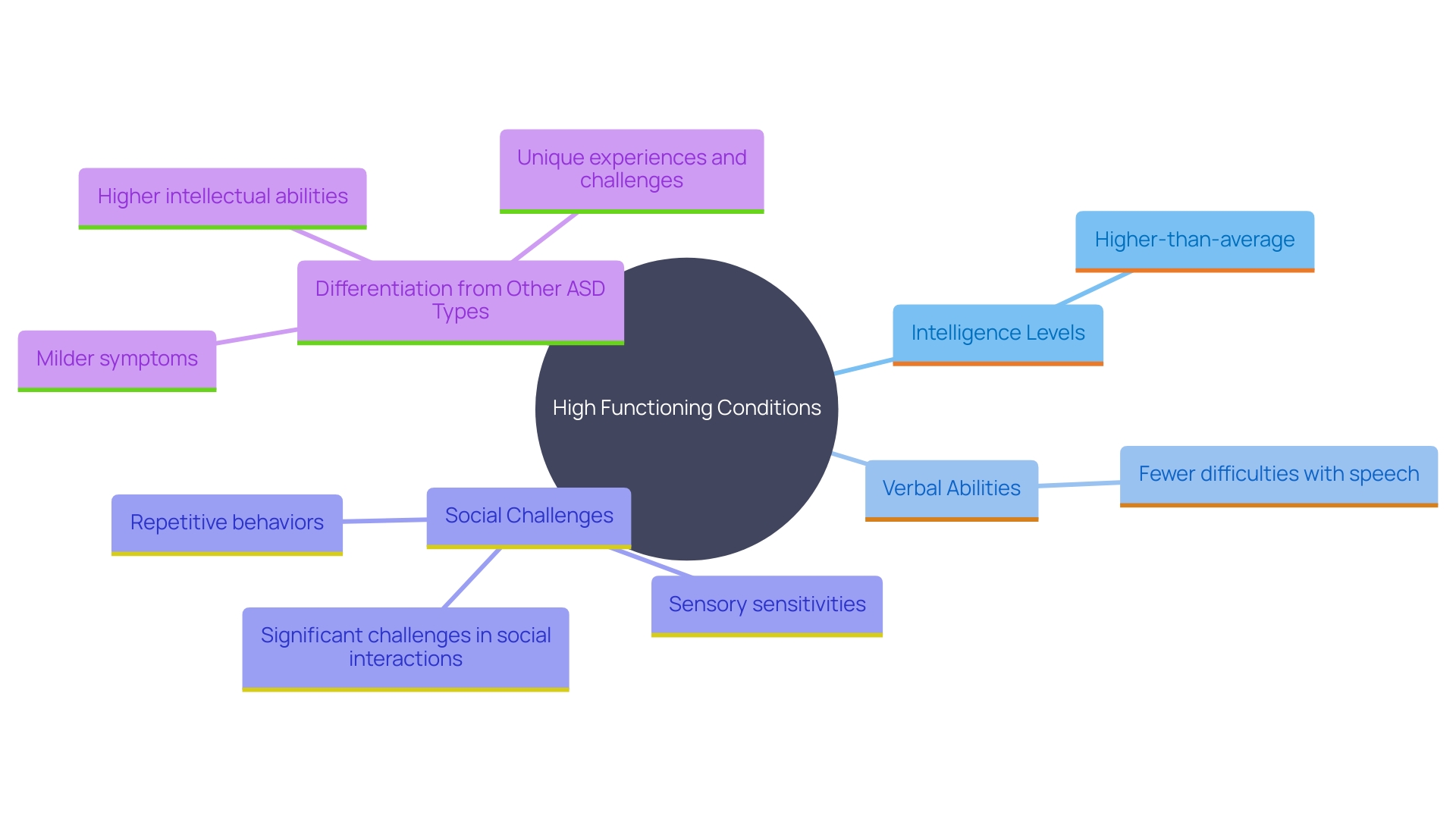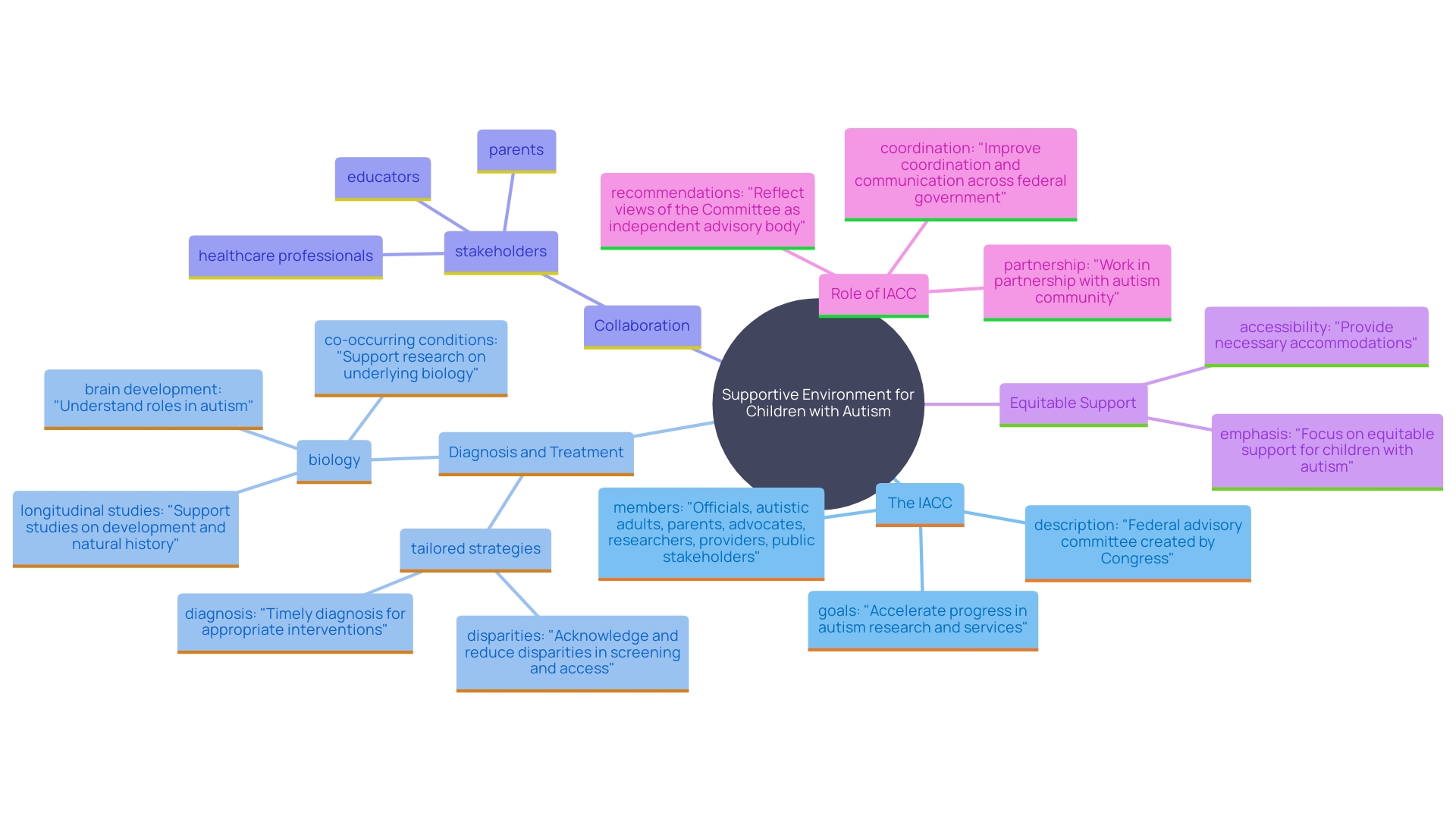Introduction
Understanding the complexities of autism spectrum disorders (ASD) is vital for ensuring the well-being of children diagnosed with these conditions. The journey from recognizing Asperger's Syndrome in the 1940s to its inclusion under the broader ASD umbrella in 2013 reflects the evolving perspective on neurodevelopmental disorders. This shift acknowledges the diverse ways individuals experience autism, emphasizing the need for personalized approaches to diagnosis and treatment.
Exploring the key differences and similarities between Asperger's and other forms of ASD reveals the unique challenges each individual faces, particularly in social interactions, sensory sensitivities, and repetitive behaviors. As the medical community moves toward a more inclusive and collaborative framework, the importance of tailored support and interventions becomes increasingly clear. This comprehensive approach aims to foster a supportive environment that empowers children with autism to thrive.
Historical Context: The Evolution of Asperger's and ASD Diagnoses
Asperger's Syndrome was initially identified in the 1940s by Austrian pediatrician Hans. However, his legacy is marred by his involvement in the Nazi-era “Kinder-Euthanasie” program, where children with severe disabilities were systematically killed. This grim history has led many in the medical community to advocate for the removal of the individual's name from the syndrome.
The understanding of autism spectrum disorders (ASD) has evolved significantly. In 1981, a British psychiatrist identified a particular set of characteristics as a type of autism spectrum disorder. However, in 2013, the Diagnostic and Statistical Manual of Mental Disorders (DSM) incorporated Asperger's syndrome under the broader category of ASD to reflect the spectrum nature of these conditions. ASD encompasses a wide range of symptoms and severities, recognizing the diversity in how individuals experience and manifest autism. This shift underscores the importance of treating each case uniquely, rather than adhering to a rigid classification.

Key Differences Between Asperger's and ASD
Condition on the autism spectrum and Autism Spectrum Disorder (ASD) share many characteristics, but they also have distinct differences. Individuals with this condition often have average to above-average intelligence and demonstrate strong verbal abilities. These traits set them apart from those with other forms of ASD, who may face more significant challenges in these areas. High functioning condition, a term often linked with Asperger's, is generally characterized by higher intellectual ability and fewer difficulties with speech and communication compared to other types of this spectrum. However, it's important to note that this is not an official medical diagnosis but helps differentiate between varying levels of ASD. Individuals with high functioning developmental disorder still encounter significant challenges, particularly in social interactions, sensory sensitivities, and repetitive behaviors. The severity of symptoms can vary widely across the neurodevelopmental spectrum, making each individual's experience unique.

Similarities Between Asperger's and ASD
Both Asperger's Syndrome and Autism Spectrum Disorder (ASD) are neurodevelopmental conditions that significantly impact social interaction and communication. Individuals with these conditions often find it challenging to understand social cues and build relationships. They may also demonstrate repetitive behaviors and have specific, intense interests. Tailored support and interventions are crucial to address these unique challenges. For instance, individuals with high functioning conditions on the spectrum, which falls under the broader category of ASD, typically exhibit milder symptoms and possess higher intellectual abilities. However, they still face significant hurdles in social interactions and may have sensory sensitivities. A case in point is David, a paramedic who highlights the importance of adapting medical approaches to effectively support patients with ASD. His experience highlights the importance for healthcare professionals to be adaptable and focused on patients, ensuring that individuals with developmental disorders receive the care they require. This approach is vital because this spectrum condition presents a wide range of symptoms that require individualized understanding and intervention.
The Merging of Asperger's into ASD: Implications for Diagnosis and Treatment
The reclassification of Asperger's Syndrome under the broader umbrella of Autism Spectrum Disorder (ASD) ushers in a nuanced approach to diagnosis and treatment. This shift promotes a tailored strategy, enabling resources and support systems to be finely tuned to each child's specific needs. It also promotes a more inclusive viewpoint on the condition, encouraging greater collaboration among parents, educators, and healthcare professionals. The Interagency Autism Coordinating Committee (IACC), a federal advisory group, exemplifies this collaborative spirit by working to enhance coordination and communication across various government agencies and the community for those with developmental disorders. Their efforts aim to accelerate advancements in neurodevelopmental research and services, reflecting a collective commitment to addressing the unique challenges faced by individuals on the spectrum. Moreover, as Dr. David Offord emphasized, ensuring fair and equitable support for all children, including those with disabilities, is crucial for their mental health and overall development. This reclassification is a step towards recognizing and addressing the diverse needs of children with autism, ultimately fostering a more supportive and understanding environment for their growth.

Conclusion
The evolution of understanding autism spectrum disorders (ASD) highlights the importance of recognizing the unique experiences of individuals on the spectrum. From the historical context of Asperger's Syndrome to its integration into the broader category of ASD, this journey underscores a significant shift towards a more inclusive and personalized approach to diagnosis and treatment. The complexities of these conditions necessitate a commitment to individualized care, where each child’s specific needs and strengths are acknowledged.
The distinct differences between Asperger's and other forms of ASD reveal the varying challenges faced by individuals. While many may exhibit high intelligence and strong verbal skills, they still encounter obstacles in social interactions and sensory sensitivities. The shared characteristics of both conditions further emphasize the necessity of tailored support, ensuring that interventions are effectively aligned with each individual’s capabilities and difficulties.
The real-life experiences of individuals, such as the paramedic David, illustrate the critical role of adaptive strategies in healthcare and beyond.
The reclassification of Asperger's under the ASD umbrella signifies a step forward in fostering collaboration among parents, educators, and healthcare professionals. By promoting a unified approach to understanding and addressing autism, this shift not only enhances the resources available but also prioritizes equitable support for all children. The commitment to improving autism services and research reflects a collective responsibility to create a nurturing environment where children with autism can thrive, underscoring the importance of advocacy and awareness in navigating the complexities of these neurodevelopmental disorders.




